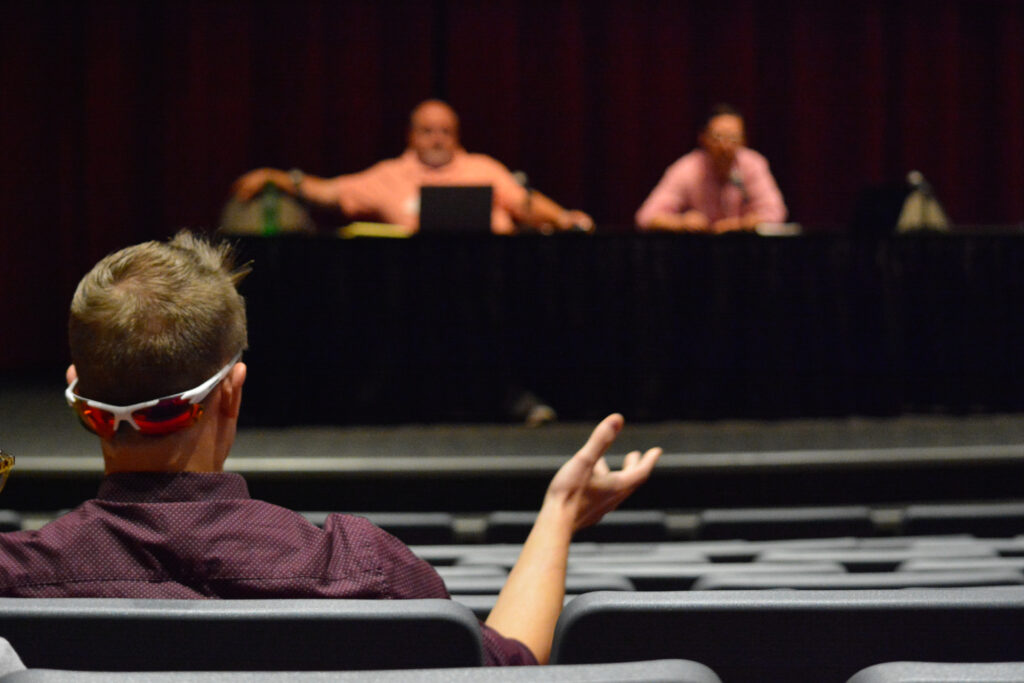By Hannah Hodge
Sports Capital Journalism Program, IUPUI
The general session “School Days,” examining the shift of high school sports coverage to online platforms, created multiple questions for debate:
What is your coverage plan?
What types of content will the subscriber pay for?
Matt Glenesk of the Indianapolis Star (above, right) emphasized the importance of high school coverage. “Nine tenths of high school content is completely undervalued for way too many years,” he said, “and the metric has shown what people are paying for and what are people subscribing too. There is nothing more local than high school sports content.”
Glenesk, who has worked at the Indianapolis Star since 2013, was joined by Tom Kreager (above, left), the South Region High School Sports Editor for the USA TODAY Sports Network. The session was moderated by Ed Reed, APSE’s third vice president and Deputy Sports Editor for Gannett Florida, who oversees the state’s 17 daily sports sections. Reed has been based at The News-Press in Fort Myers for over 20 years.
- Read Ed Reed’s PowerPoint on high school sports planning in the digital era
Glenesk added that the market is much different compared to college and professional coverage, “You have probably the least amount of competition in terms of other people trying to get into that area,” he said. “The unique attribute of the market is that you always get new parents and grandparents every four years and can keep up with the athletes as they go to college for additional stories.”
Glenesk said that softball leads in demand for subscriptions in the category of girls athletics on the Indy Star website. Next, the topic shifted, with Reed explaining the importance of pre-planning. A PowerPoint slide provided a checklist for pre-planning, including publishing the game scores, setting up polls to engage the audience, social media exposure, photography from the event, and key dates when to publish.

Kreager chimed in, responding, “Planning is essential as you can change the narrative of how we are covering sports and obviously we are gravitating away from game stories. The idea is we have to have a conversation with the writers and what exactly that they are going to be writing and having great communications with them, and also including a social plan with that story.”
Kreager said Sunday, Monday, and Tuesday nights are great days to publish, when people subscribe the most. Fridays, he said, are the worst. However, Friday night football leads in publications in southern regions.
The session led to a discussion of game stories and how social media such as Twitter has made it challenging to keep up. “Twitter killed game stories,” said Kreager, who added that game stories are only written about recruitments and state championships. One exception is unique games with wild endings that will bring high volumes of traffic that can lead to subscriptions.
Game stories such as state championships for Kreager’s writers are quick and straight to the point. Limited to 200-300 words, they are published before the game trophy is handed out and re-edited after getting quotes from key players and coaches. Then the publication is put into “premium mode,” so if the viewer wants to see the addition to the story, the viewer will have to subscribe.
The session ended with an interesting question: Do you want to trade ten subscriptions for two and maybe 10,000 more pages?
“Maybe, maybe not,” said Glenesk.





